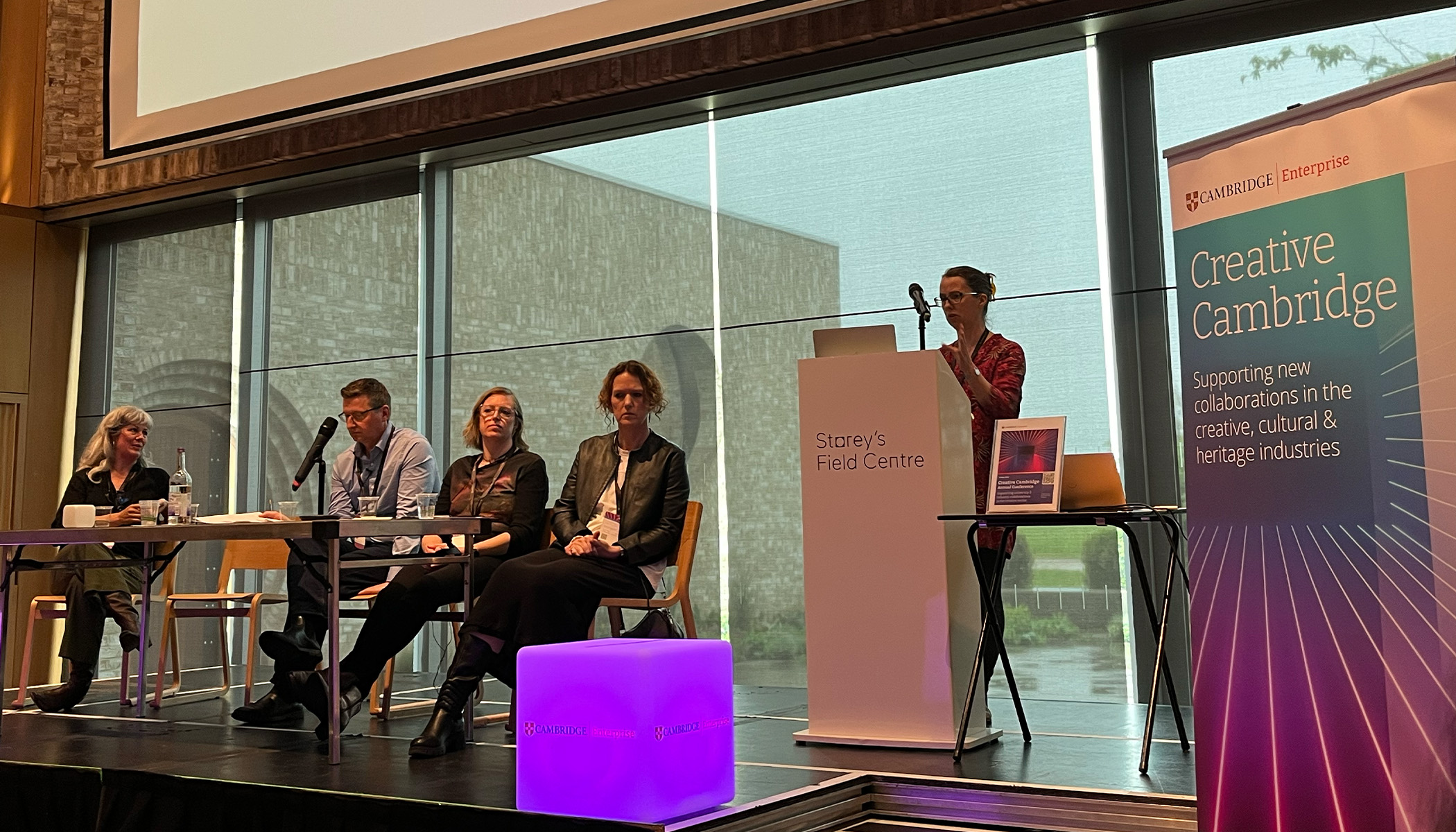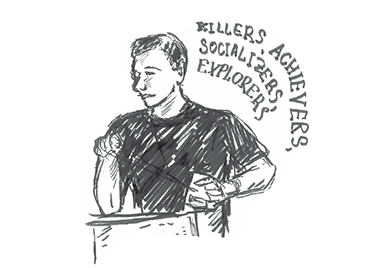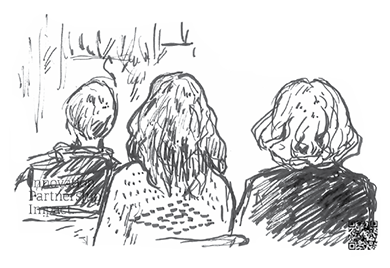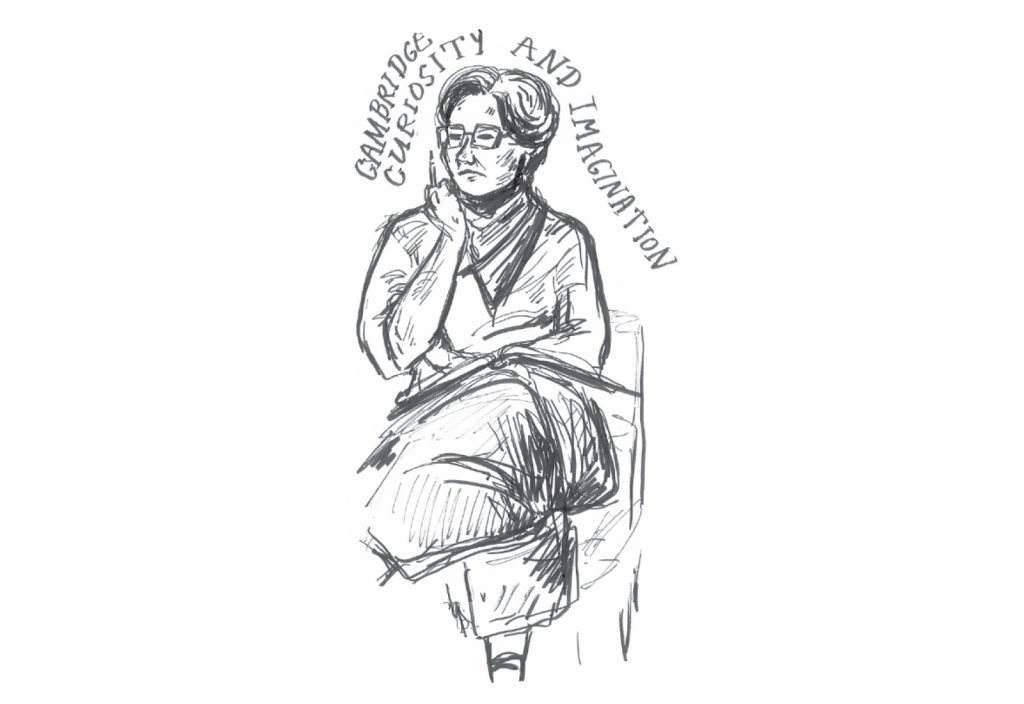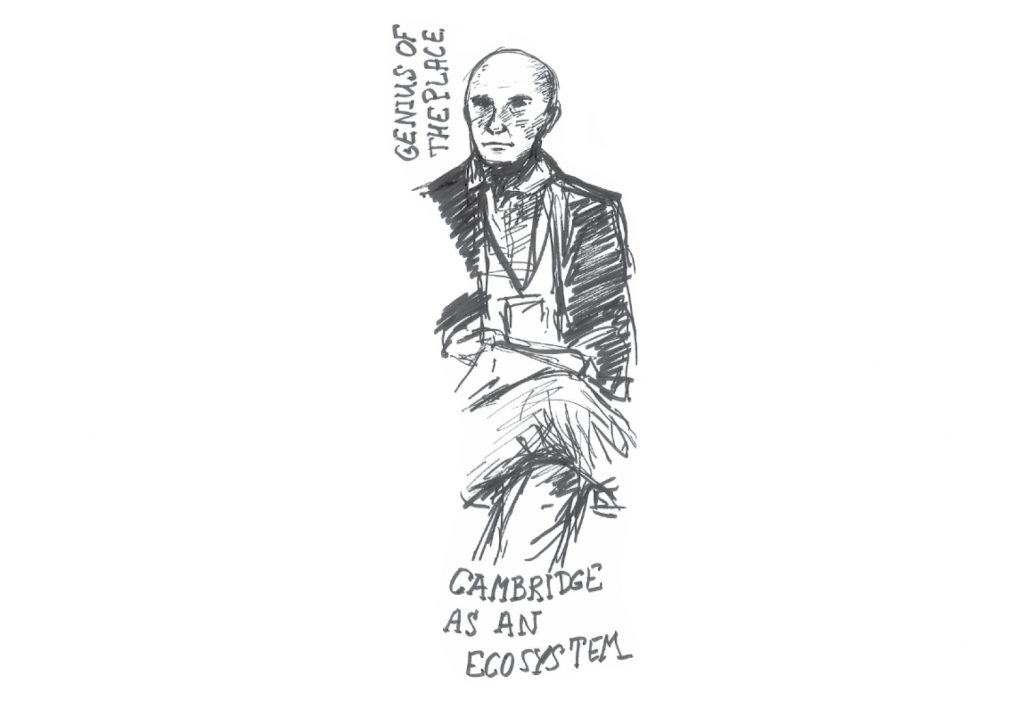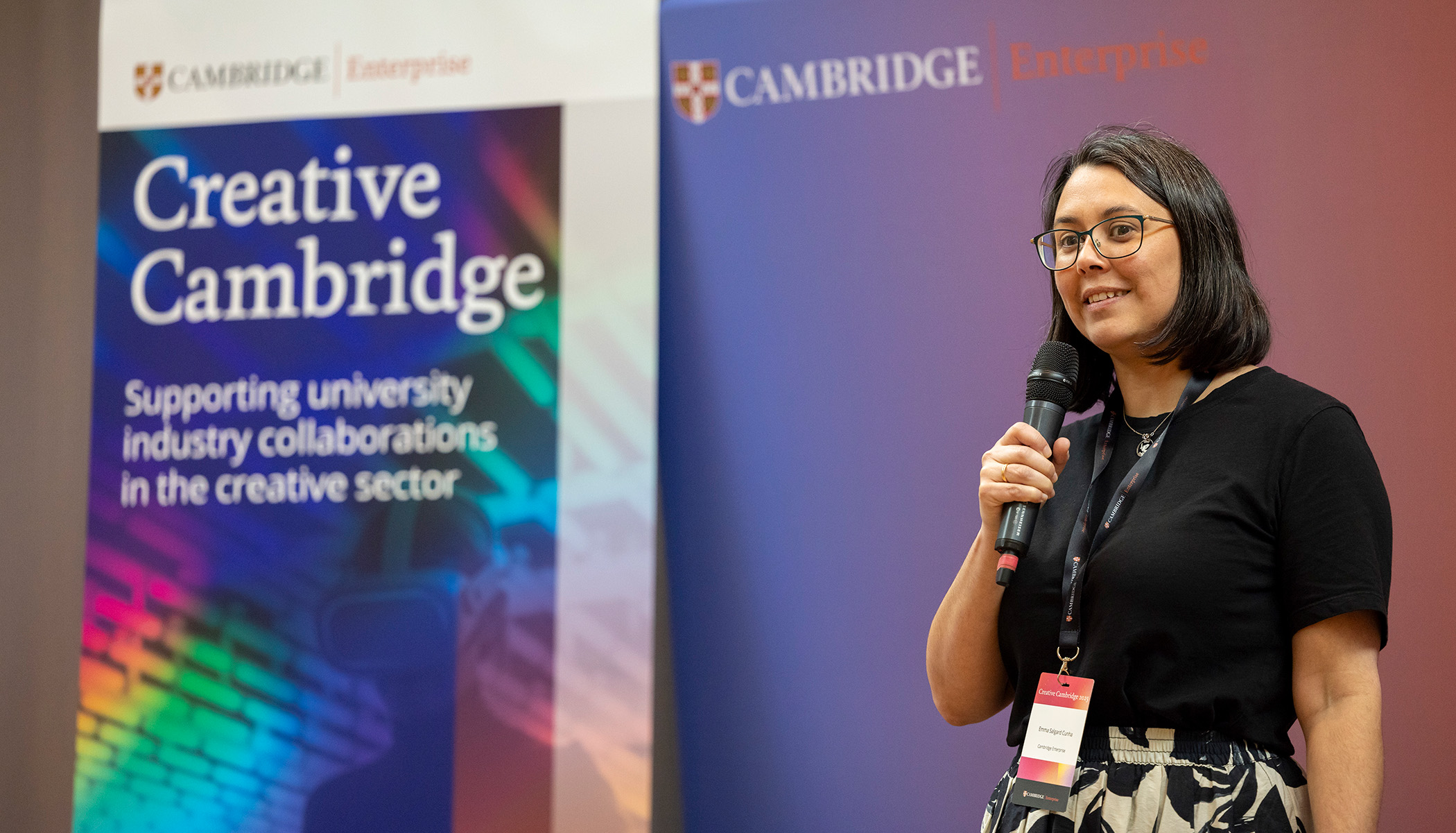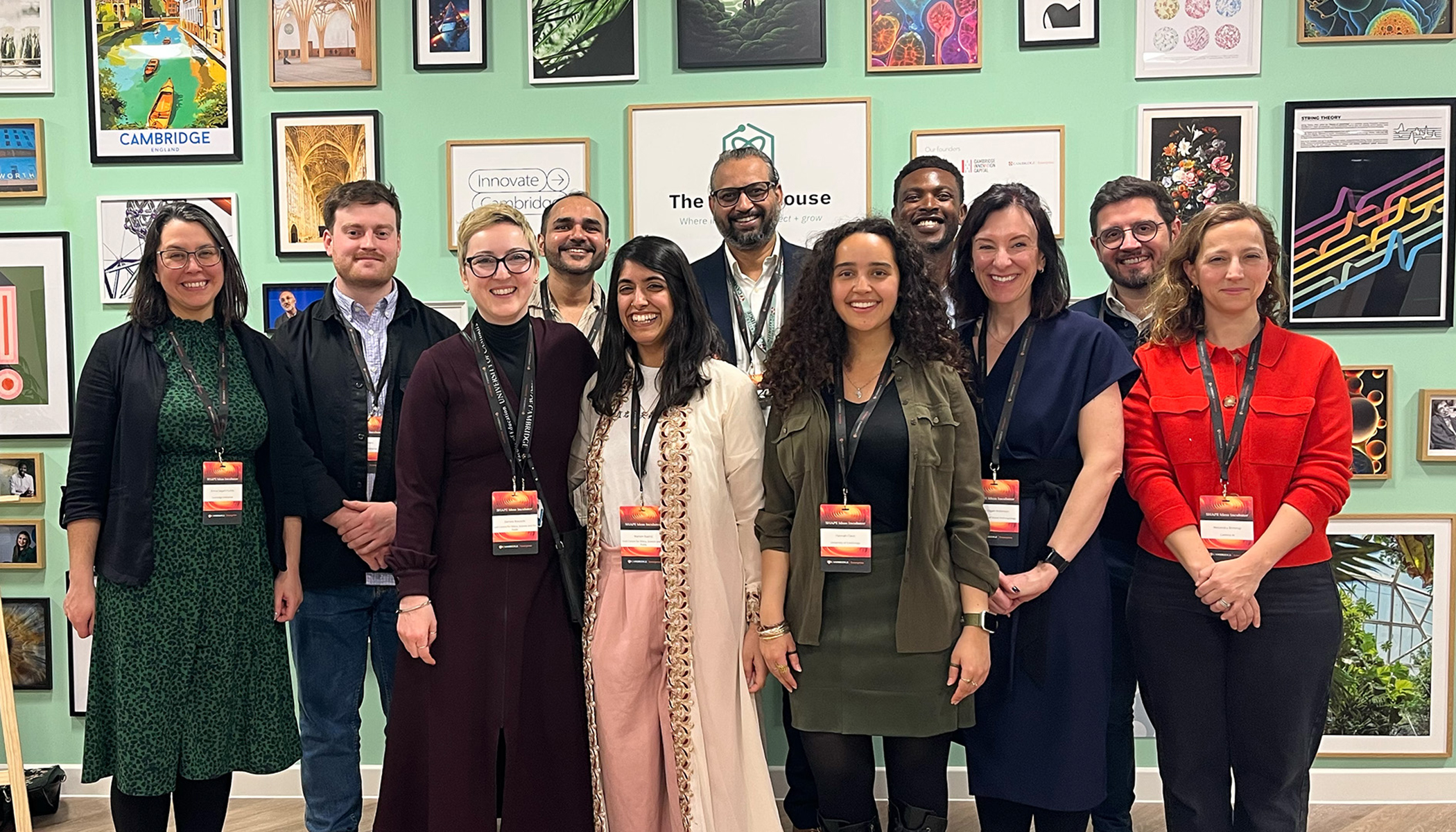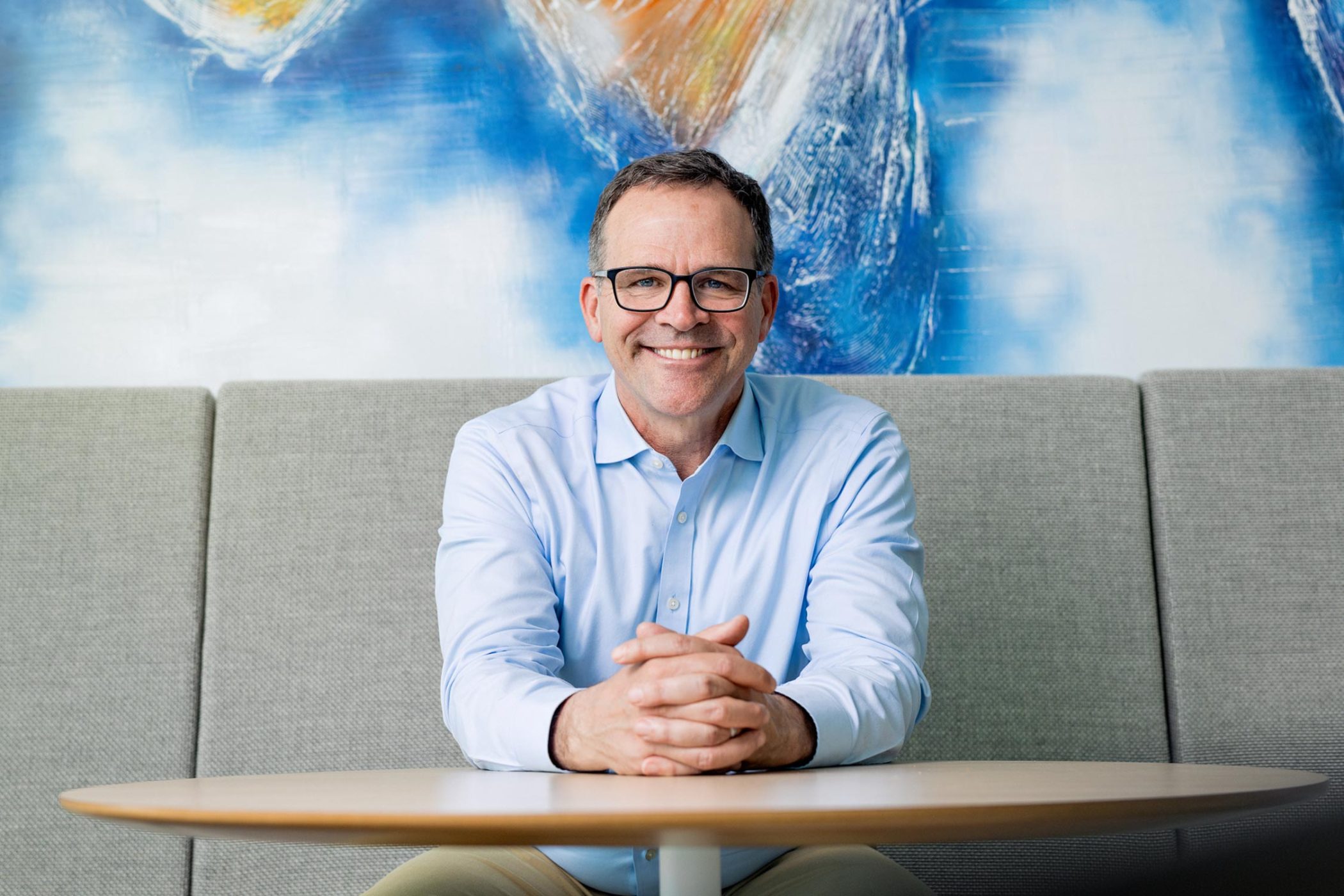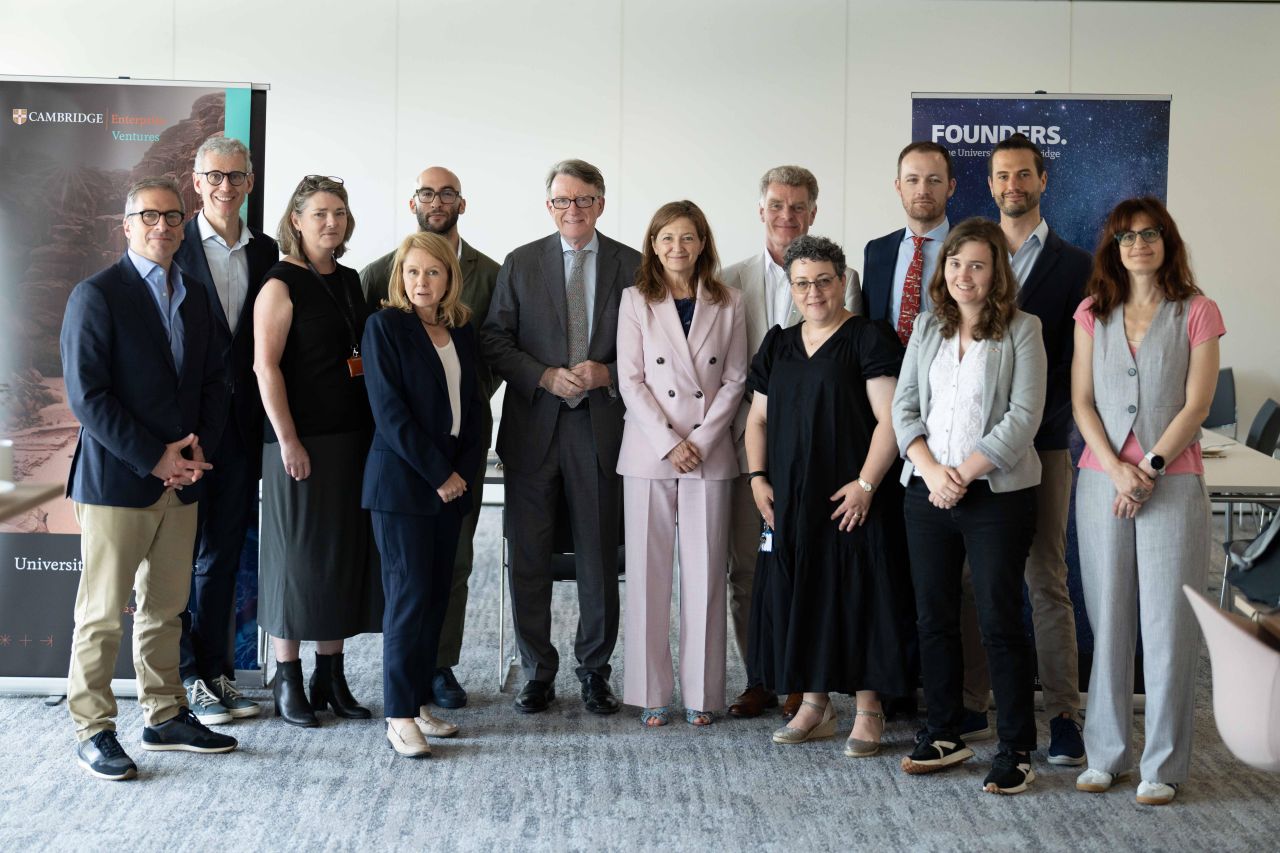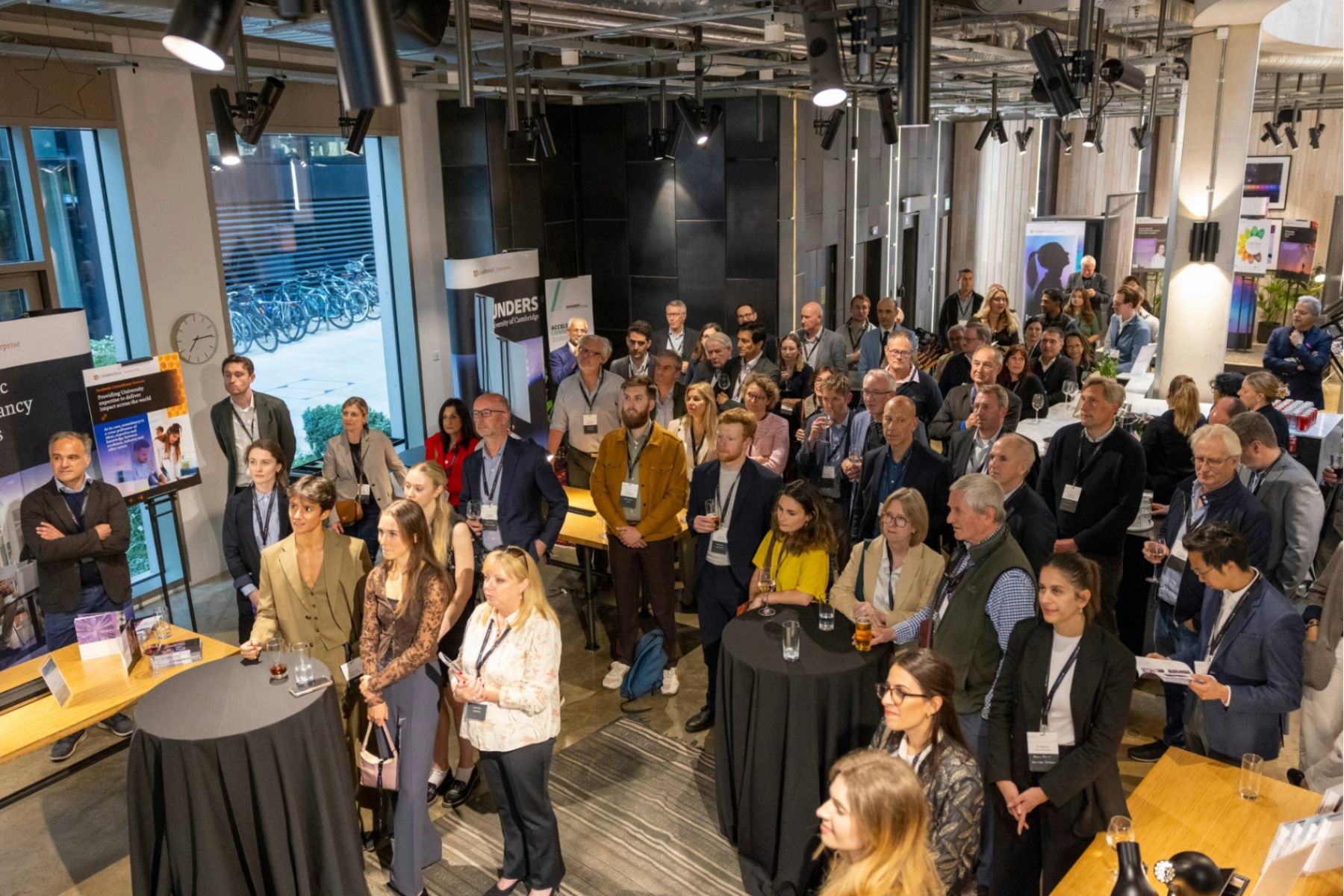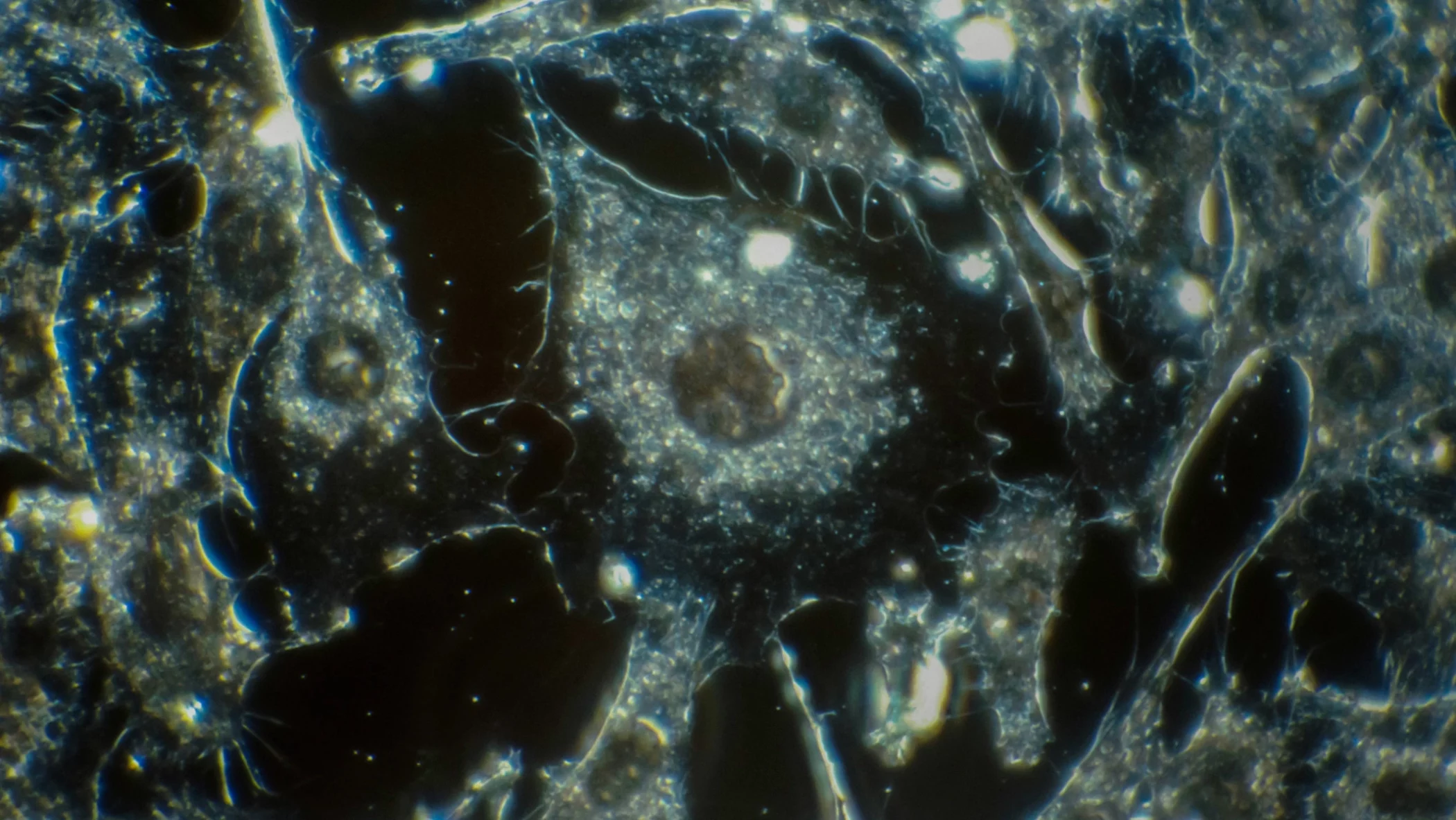In May we welcomed Cambridge’s creative minds to gather for the fourth year for a festival style event in pursuit of new opportunities for collaboration and inspiration between researchers, artists, students, entrepreneurs, technologists and creative industries professionals.
The aim of Creative Cambridge has always been to support a community of experts and practitioners in the cultural and creative sectors, highlighting some of the most exciting collaborative approaches taken both by creative practitioners and academics across the disciplines.
Building through collaboration and play
This year’s event at Storey’s Field featured a programme of talks, panel discussions, pitches, and of course, networking, with a theme of building things: with interdisciplinary expertise and lived experience; in different kinds of media and realities, and at the intersection of research and artistic practice.
The first panel focused on world-building as a paradigm in and outside of game design. The panel introduced the creative possibilities that can emerge through the art of shaping shared realities and experiences. Lawrence Grabowski of Chaotic started us off by introducing their experimentation with game affordance optimisation to support variety, challenge, cooperative behaviour – and fun! Sam Sully from Planetary Processing followed, sharing his dreams of creating the ultimate virtual world and how his technology brings the possibility of running large scale simulation within the reach of independent game designers. Melanie Smith from the Royal College of Art Design Age Institute introduced their approaches to inclusive and innovative design, inclusive participation in the design processes which go into building our world, and moving the bar from functional accessible design to designing for joy! Lara Mani from Cambridge’s Centre for the Study of Existential Risk showed us how world building can be used to prepare for future risks, via simulation, role-play and collective storytelling.
“It was inspiring to see how local artists, educators, and tech enthusiasts are collaborating to push boundaries, reimagine the future, and build a shared sense of place.”
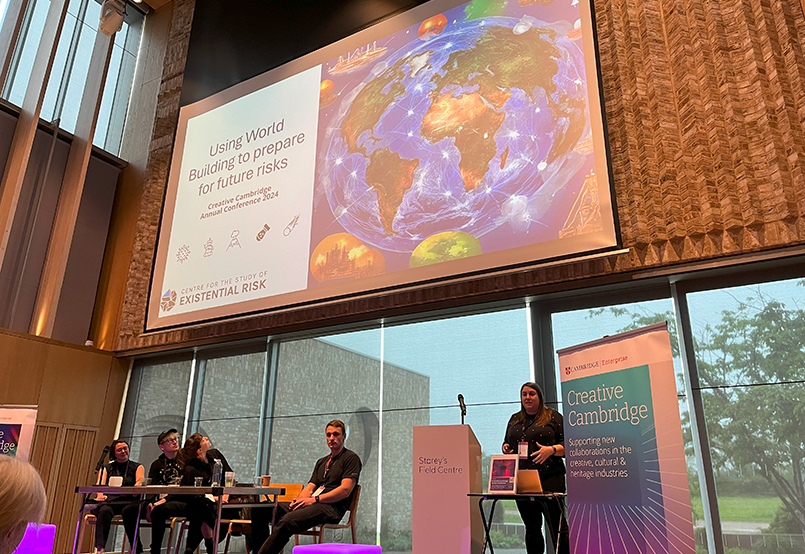
On the second panel, we explored “making play work” with an introduction to the Shape Hub programme at the University of Cambridge. Rachel Drury, Director of Collusion, posited that artists are the unicorns of public engagement, skilled in capturing the imagination, creating debate and engagement with complex and challenging subject matter.
We heard about the steps taken by Collusion to facilitate academics and researchers to step out of their normal modes of public engagement, and to embrace participative methods for “research dissemination” through collaboration with artists. We then heard from some of the programmes’ first cohort of participants. Anna Brownsted, a Cambridge-based international artist working in mixed media, introduced us to her co-creation processes for Drawing Machine #6, part of the Making New Worlds exhibition at Kettle’s Yard. in which she worked closely with an engineer to reimagine the drawing machine of Li Yuan-chia. Playfulness, experimentation, resourcefulness and openness to learning across disciplines sits at the heart of this work. Her new collaborator, Bettina Varwig, Professor of Music History, discussed the affective power of music, highlighting the prominent role of bodily sensation in the historical experience of classical music and her attempts to recreate sensory cues and transform historical repertoires in contemporary performance.
Finally, Matthew Brudenell from Cambridge Archaeological Unit introduced the incredible treasure of the Fenland Bronze Age site Must Farm (so-called the British Pompeii), and a collaborative project in its infancy to find artists who can work with the archaeologists to move beyond archaeological illustration and develop truly immersive discovery experiences that allow the public.
Pitching to create connection
As has become traditional, throughout the day we invite attendees to make short pitches to further encourage collaboration within our community. We heard from:
- Matt Hagger on Tale Tree and the digital platform’s methodology of process and play over outcomes in nurturing creativity.
- Shiyu Zhang on Ju Suo/Haven, a digital space exhibition.
- Josh Fitzgerald on responsive designs and digital-age learning tools for old games like Coyote.
- Chloe Thomas, a filmmaker who is looking for unusual and gripping stories for screen dramas as well as talent to collaborate with.
- Helene Doerflinger & Natalie Walls on Scientists Collaborative Project with Educators (SCoPE) and their free toolkits and games for teaching biology.
- Cambridge Kinetics – on Kinabase and how it offers a smarter way to manage business information.
- Colin Ramsey on his documentary film, Six Inches of Soil, and his development of the film into educational cuts.
- Claudia Antolini and the opportunities for creatives with public engagement.
- Alex Morgan and Aknouen, their freelance animation and design offering.
Proactively bringing different perspectives together
After a day of presentations and pitches, the final discussion of the day turned to the Cambridge creative ecosystem. Our chair Matt Burman, CEO of Cambridge Junction, was joined by Dr Diarmuid O’Brien, the University of Cambridge Pro-Vice-Chancellor for Innovation; Head of Ecosystem Initiatives and Partnerships at Cambridge Enterprise, Caroline Hyde; Dr Idrees Rasouli, Deputy Head of Cambridge School of Art at Anglia Ruskin University, and Ruth Sapsed, Director of Cambridge Curiosity and Imagination.
They took to the stage to discuss Cambridge’s sense of place, and how the cultural and creative elements of Cambridge can sit alongside both its history and its innovation; how can major initiatives like Innovate Cambridge work to centre the needs and the contributions of artists and creative organisations; and how can attention to Cambridge’s creative scene enable bridge-building and co-creation between the rapidly growing science, technology and innovation sector and Cambridge’s existing communities.
The title of the panel was inspired by Steve Coghill, Head Gardener at King’s College, who was part of a performance at Cambridge Festival 2023. During a performance of his art and work, he introduced the idea of the genius loci, which inspired early modern landscape garden aesthetics. For the panel, this sense of the ‘spirit of the place’ could be brilliant way to look at a collaborative cultural strategy, attentive to what makes Cambridge such a beautiful place to live, work and create together.
This theme set the scene for an enthusiastic discussion on opportunities for collaboration between culture and innovation, between CREATE Cambridge and Innovate Cambridge:
- The role of cultural anchor institutions in driving innovation and creativity, with a focus on adaptability, collaboration, and place making.
- How both the innovation communities and institutions in Cambridge, and our arts and cultural industries can play a role in tackling the economic disparity and wealth gap within our city and region.
- The impact of digital technology and Cambridge’s thriving gaming and computer science scene, and what ‘good’ AI could offer Cambridge and our cultural sector.
- The importance of involving young people in the conversation, building skills, and creating cultural assets for future generations.
- The need to hold institutions accountable for ethical practices around creativity, and to develop and share best practice around potential obstacles such as authorship, intellectual property and ethics when bringing together researchers, students, entrepreneurs and artists.
- The importance of play, imagination, and especially risk-taking for both creativity and innovation, and the role of shared spaces that allow for collaborative risk-taking.
- How best to raise funds for innovation projects, with a prioritisation on inclusivity and access to resources.
A shared sense of place
Panellist and Deputy Head of Cambridge School of Art, Dr Idrees Rasouli, commented after the event on how
“Cambridge’s blend of tradition and cutting-edge innovation reminds us of the power of place in fostering creativity and technological advancement, and the vital role culture plays in shaping and being shaped by technology. It was inspiring to see how local artists, educators, and tech enthusiasts are collaborating to push boundaries, reimagine the future, and build a shared sense of place.”
Once again, we thank everyone who enriches the Creative Cambridge event with their conversation and participation. We’re looking forward to next year’s Creative Cambridge already. If you’d like to be the first to know about the next event, please sign up to our newsletters below and select the Creative Cambridge option in your preferences.
Image credits:
With thanks and credit to Alexandra Vasilyeva for capturing the day in her drawings.



